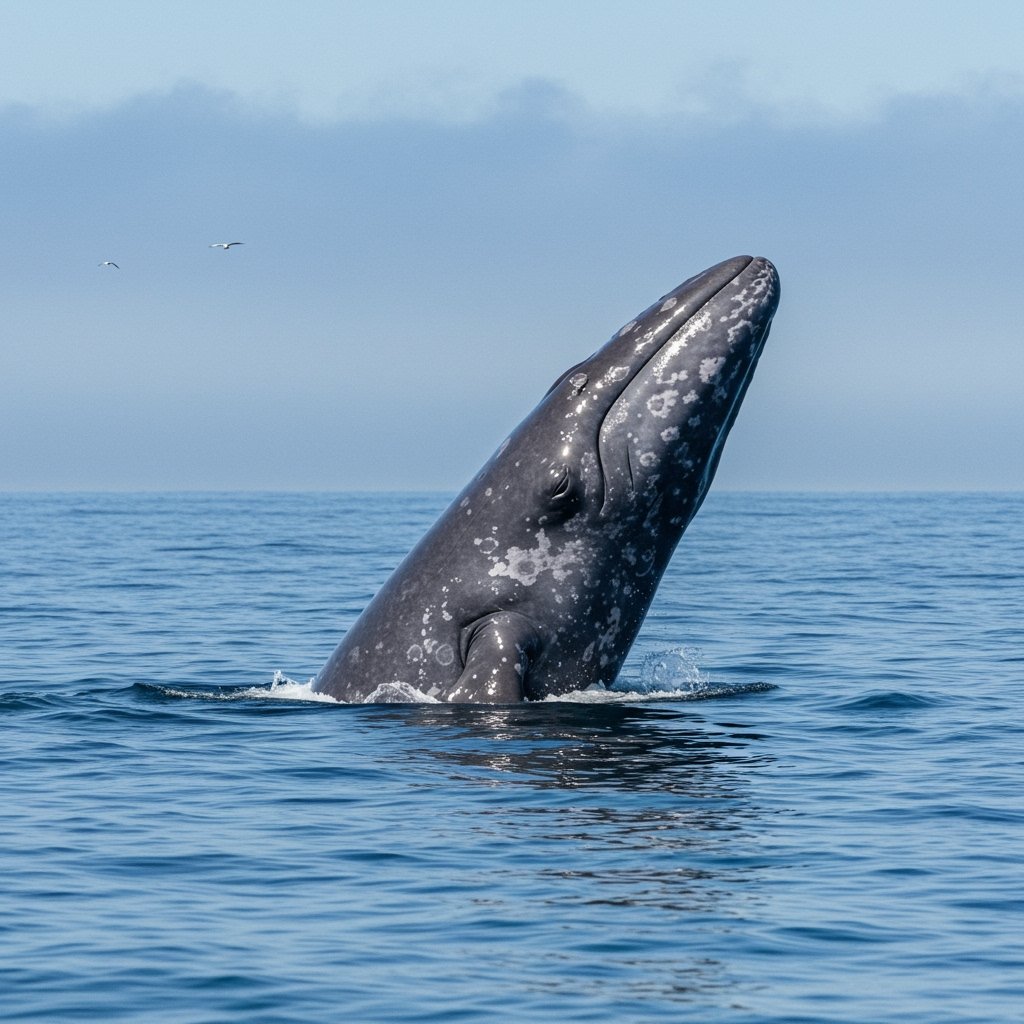Recent observations of eastern North Pacific gray whales along the West Coast are raising concerns among scientists, even after the official conclusion of a prolonged “Unusual Mortality Event” (UME).
The UME, which spanned from December 2018 to November 2023, saw a significant number of gray whale strandings across the west coast of Northern America, totaling 690 documented cases. While the formal designation has ended, current data and sightings suggest the population may not be rebounding as hoped.
Continuing Concerns After Mortality Event
For five years, the eastern North Pacific gray whale population experienced elevated mortality, leading NOAA Fisheries to declare an Unusual Mortality Event. Such declarations are made when a significant die-off of a marine mammal population occurs, requiring immediate investigation. The 690 strandings recorded during this period highlighted a serious issue facing these migratory whales.
However, the end of the UME in late 2023 has not brought an end to the concerns. Scientists continue to monitor the population closely and are finding indicators that point to ongoing challenges for the species.
Troubling Trends in Baja California and Beyond
Alarming reports emerged from Baja Mexico this past winter, detailing the deaths of at least 80 gray whales. These deaths occurred in crucial calving and breeding lagoons, a vital area for the population’s reproduction. Compounding this concern is the observed decrease in the number of calves born, a factor critical for the long-term health and growth of the population.
Whale biologists are watching these trends closely, as reduced reproductive success coupled with continued mortality can have significant impacts on overall population size and resilience.
Elevated Strandings Along the Coast
The migration route along the North American West Coast continues to see elevated numbers of gray whale strandings. As of late May, 47 strandings had been documented in US states alone. This includes 27 strandings in California, 13 in Washington, and 7 in Oregon.
These numbers, occurring relatively early in the year for the migration cycle, signal that the pressures on the population persist despite the formal UME conclusion. Each stranding represents a loss to the population and provides scientists with opportunities to investigate potential causes of death.
Unpacking Potential Causes
A recurring observation among many stranded whales is their emaciated condition. This lack of blubber and overall poor health suggests potential difficulties in finding sufficient food resources. Scientists hypothesize that this widespread emaciation may be linked to food supply issues in the Arctic.
The Arctic is a critical summer feeding ground for eastern North Pacific gray whales, where they forage on bottom-dwelling invertebrates. Climate change is altering the Arctic environment rapidly, potentially impacting the availability and distribution of these food sources. Changes in ice cover, ocean temperature, and ecosystem structure could be making it harder for whales to build up the necessary energy reserves for their long migration and reproduction.
Ship Strikes Pose Threat in Key Areas
In addition to potential food scarcity, localized threats like ship strikes remain a significant danger. Approximately half of the California strandings recorded so far this year occurred within San Francisco Bay. This bay is a busy shipping channel, and gray whales are known to enter it to feed.
Their feeding behavior, which often involves foraging along the bottom in relatively shallow waters, may make them particularly vulnerable to collisions with vessels. Efforts to understand whale movements and implement mitigation measures in areas like San Francisco Bay are crucial to reducing this risk.
Population Outlook and Expert Perspectives
NOAA Fisheries is expected to release its latest official population estimate for the eastern North Pacific gray whale population soon. The most recent estimate, from 2024, placed the population at around 19,000 individuals.
However, leading experts express caution regarding the current situation. John Calambokidis, a whale biologist with Cascadia Research Collective, stated that the “current conditions suggest a continuation rather than a rebound from the mortality event.” His assessment underscores the concern that the population may still be experiencing significant stress factors that prevent a healthy recovery following the UME.
Looking Ahead
The combination of elevated strandings, poor physical condition of many whales, concerning mortality rates in calving areas, and reduced calf production paints a worrying picture for the eastern North Pacific gray whale population. While the formal Unusual Mortality Event has ended, the challenges facing these iconic marine mammals clearly have not. Continued monitoring, research into the causes of mortality and emaciation, and efforts to mitigate threats like ship strikes are essential steps in assessing and supporting the future health of this population.



















